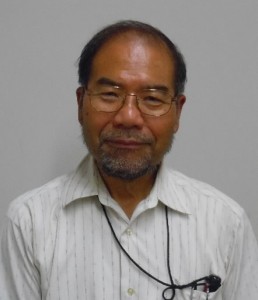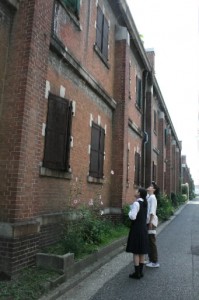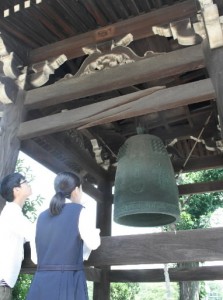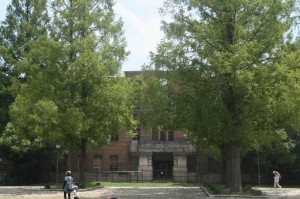Peace Seeds: Hiroshima Teens Report on Peace Issues, Part 6
Jul. 28, 2014
Call for preservation of A-bombed buildings, witnesses to history
The atomic bombing reduced Hiroshima to ashes, with most of the buildings in the city center destroyed and burned, but some structures from that time still stand and are known as “A-bombed buildings.” Today, however, these buildings are aging and are vulnerable to earthquakes. With such problems to address, a growing number of people are calling for the preservation of these witnesses to the atomic bombing.
85 A-bombed buildings remain in Hiroshima, require expensive seismic retrofitting
By Yumi Kimura, third-year high school student, and Kana Fukushima and Kyoka Yamada, first-year high school students
“A-bombed buildings” are buildings that survived the atomic bombing and are located within five kilometers of the hypocenter, excluding private homes. According to the Peace Promotion Division of the City of Hiroshima, 102 buildings have been registered as A-bombed buildings since 1993. Because some of these buildings have been demolished as they became decrepit, 85 remain today, including 20 public buildings and 65 privately-owned buildings.
When the owner of an A-bombed building pursues preservation work, the city government covers three-quarters of the cost with a ceiling of 30 million yen. To date, the city has provided subsidies to 19 preservation projects.
There are, however, difficult issues such as the enormous expense for seismic retrofitting. The city government says that it is reviewing how the A-bombed buildings should be maintained.
Interview with Norioki Ishimaru, former professor at Hiroshima University: Wider discussion is needed among the public
By Shino Taniguchi, first-year high school student
The junior writers interviewed Norioki Ishimaru, 73, a former professor of urban planning at Hiroshima University who has been involved in the preservation movement, and asked him about the history and the significance of preserving A-bombed buildings.
Mr. Ishimaru told us that the first debate about preserving an A-bombed building took place over the A-bomb Dome, which stands in Naka Ward. With donations from across Japan, preservation work was carried out two times on this building, which was registered as a UNESCO World Heritage site in 1996.
Many A-bombed buildings, however, have been demolished. Today there are stronger voices calling for the preservation of deteriorating buildings, such as the former Hiroshima University Science Faculty No. 1 Building, in Naka Ward, and the former Army Clothing Depot, in Minami Ward.
“A-bombed buildings are witnesses to the atomic bombing,” Mr. Ishimaru said. “They can convey this event to future generations. These buildings are historic buildings, and people have made efforts to utilize them. In this regard, too, they hold significant messages. I would like the public to discuss this matter more widely.”
We came away from this interview feeling that we must reflect seriously on the meaning of the A-bombed buildings.
Damage to the buildings clearly shows the scars of the atomic bombing
Story by Arata Kono, second-year high school student, and Hiromi Ueoka, second-year junior high school student, and photographs by Shino Taniguchi, first-year high school student
We visited some A-bombed buildings in the middle of July. Their conditions vary: some show scars from the bombing; some now exist only as a portion of the original building, preserved as a memorial; and others are in a dilapidated state, unused.
The belfry of Tamonin Temple, located in Minami Ward, 1.7 kilometers from the hypocenter, is made of wood, and its ceiling still bears serious damage done by the A-bomb blast. We were told that many students visit this site on school trips.
The former Army Clothing Depot, in Minami Ward, is a ferroconcrete building and its brick walls appear sturdy, but the bomb blast warped the building’s iron window shutters. This building, as well as the former Hiroshima University Science Faculty No. 1 Building, in Naka Ward, is not being used, and as time passes, the structures continue to deteriorate.
The walls of the former Hiroshima Local Meteorological Office building, in Naka Ward, are still pierced with glass fragments that flew in the explosion. It is now called the Ebayama Museum of Meteorology. The former Bank of Japan’s Hiroshima Branch building, also in Naka Ward, is used as an exhibition space, too. The City of Hiroshima has designated both buildings as “important tangible cultural properties.”
The A-bombed school building of the former Danbara Junior High School, in Minami Ward, has been demolished, and a park was made at the site. This park includes a monument composed of part of the wall of the school building and the gateposts.
The scars on the A-bombed buildings show the tremendous magnitude of the atomic bombing. If people band together and discuss what can be done with the unused buildings, we believe this would generate ideas for making good use of them.
The buildings that show fewer scars from the atomic bombing also convey the history of the A-bomb survivors who have strived to rebuild the city and prayed for peace in the world. We believe, if as many A-bombed buildings as possible can be maintained, they can constitute the most significant feature of the city of Hiroshima.
Junior Writers’ Comments
Arata Kono, second-year high school student
The A-bombed buildings are witnesses to history as they were actually exposed to the atomic bombing 69 years ago. They are different from photographs and testimonies in that visitors can see and touch firsthand the damage done by the atomic bombing. In order for Hiroshima to appeal for peace widely to future generations, I hope as many A-bomb buildings as possible will be maintained.
Kana Fukushima, first-year high school student
I knew about the A-bomb Dome and other well-known A-bombed buildings, but I didn’t know that there are many other A-bombed buildings still around nearly 70 years after the atomic bombing. I’d like to find opportunities to go and see them.
Hiromi Ueoka, second-year junior high school student
I had thought that there were very few A-bombed buildings and that they were all maintained with great care. I was surprised to know that there are still many A-bombed buildings around us and that some aren’t being used and are deteriorating. I’d like to go and see as many A-bombed buildings as I can.
Yumi Kimura, third-year high school student
Before I went to the city office to ask about the A-bombed buildings, I had thought that they were being demolished one after another and that the situation was serious. I learned, however, that there are still many A-bombed buildings in the city and that the city government is trying to maintain these buildings as much as possible. In order to keep them, we have to actively discuss such issues as the effective use of these buildings.
Kyoka Yamada, first-year high school student
I thought I knew about the A-bombed buildings, but what I learned this time was all new to me. I thought more public relations efforts should be made so there will be wider awareness of the A-bombed buildings. We must protect and preserve these important buildings, which vividly tell us about the tragedy of the atomic bombing.
Shino Taniguchi, first-year high school student
There are many A-bombed buildings that are not well known because they aren’t being used or because there aren’t any signs explaining about them. Even if they’re preserved, though, if they’re left like this, I don’t think they would have much meaning. We need to make them better known to the public so they can play a role as witnesses that tell about the city which suffered the atomic bombing.
(Originally published on July 28, 2014)










